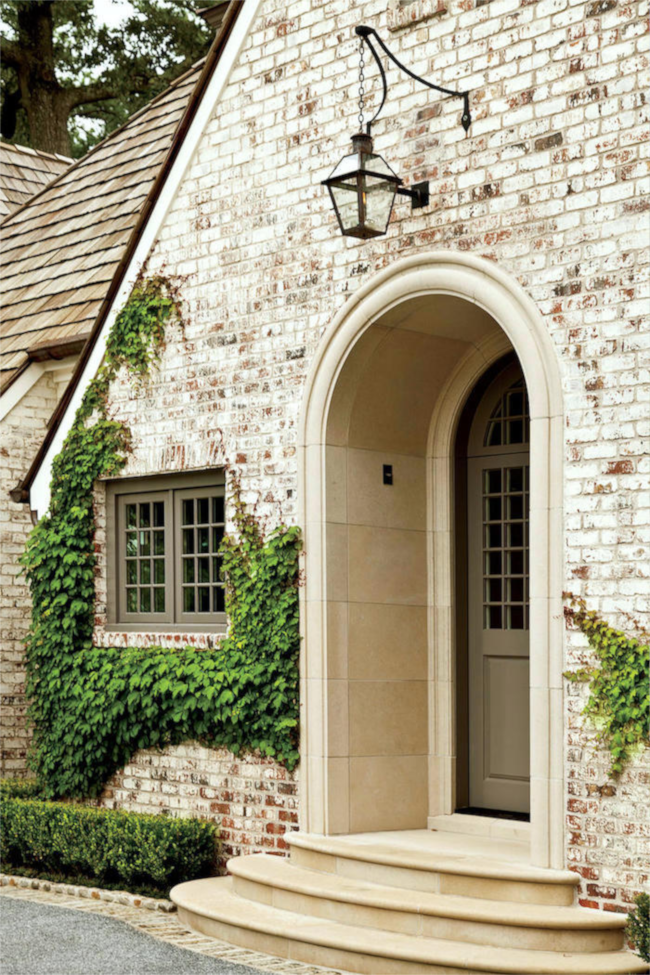
No, German schmearing is not a sex position. That I know of. German schmearing, otherwise known as lime washing or whitewashing, is a treatment for updating brick. It’s also something I’ve become obsessed with since becoming a homeowner. I randomly came across it on Pinterest one day and haven’t been able to stop thinking about it since.
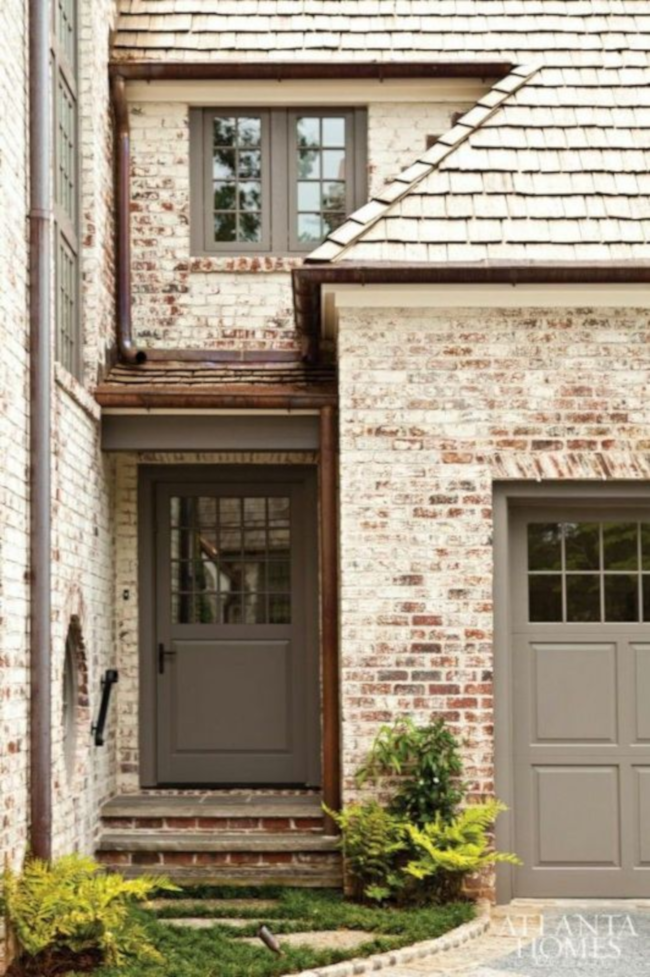
When we had our house inspection ahead of finalizing purchasing our home, one of the comments our inspector made about the exterior of our house was that the mortar needed to repointing in places and the brick had unfortunately undergone some kind of treatment over the years [he suspected power washing] that removed the veneer or finish from the original brick. Because of this, the brick is a muted colour and was susceptible to damage, and when I later found out about German schmearing, I thought it could be a perfect solution to our strange orange brick.
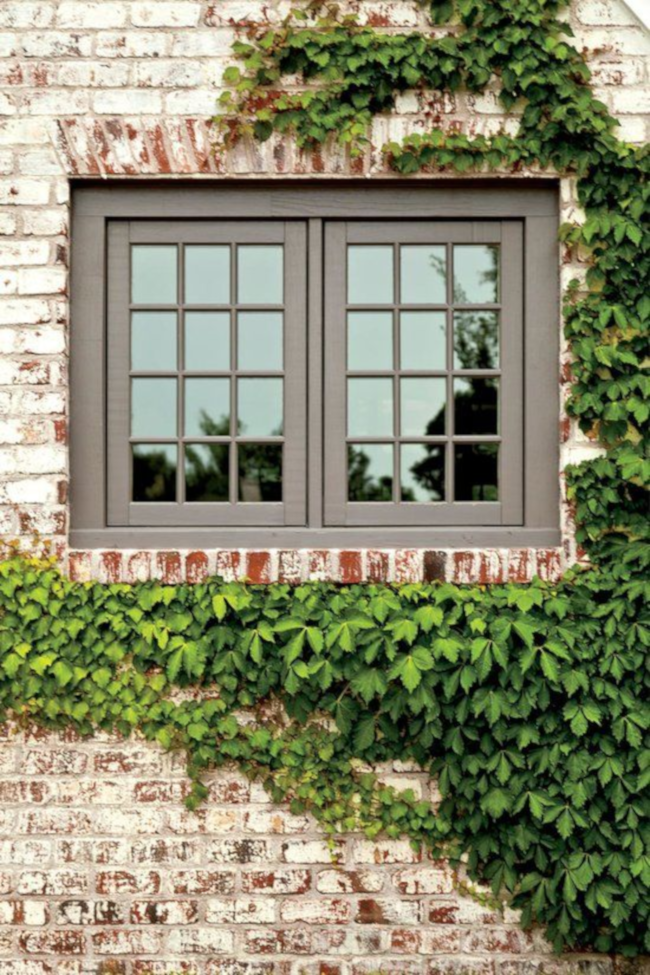
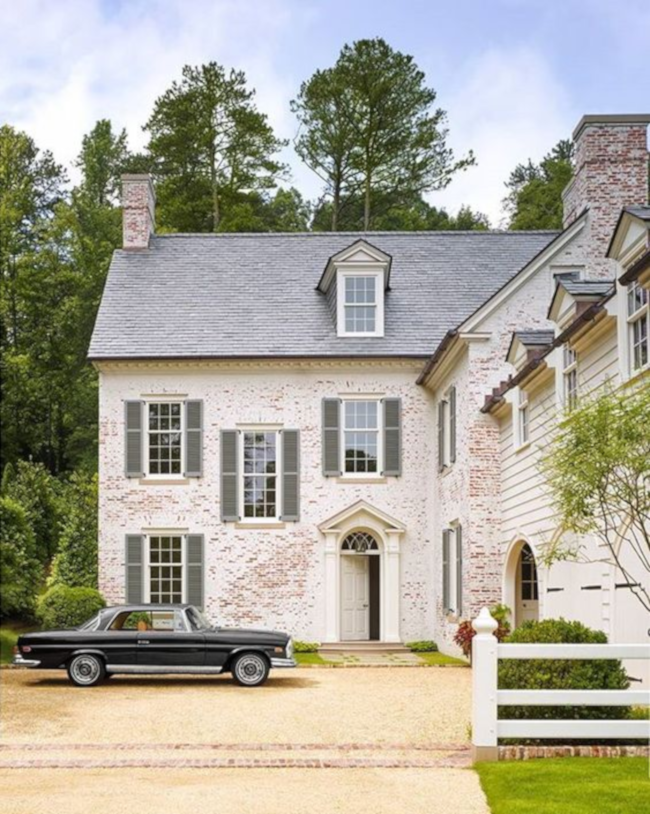
While the brick is original and is from the Victorian era, it’s pretty basic. Really basic. It isn’t laid in lavish patterns and isn’t fancy. I’m not complaining, but this is another reason why I am partial to giving our house the schmearing treatment. Repointing the mortar as well as dealing with the washed-out orange brick colour might make it look less barfy.
Since then I’ve been obsessed with finding more German schmearing images on Pinterest to further convince myself that this might be a practical solution that would ultimately validate my want to change the strange colour of our house.
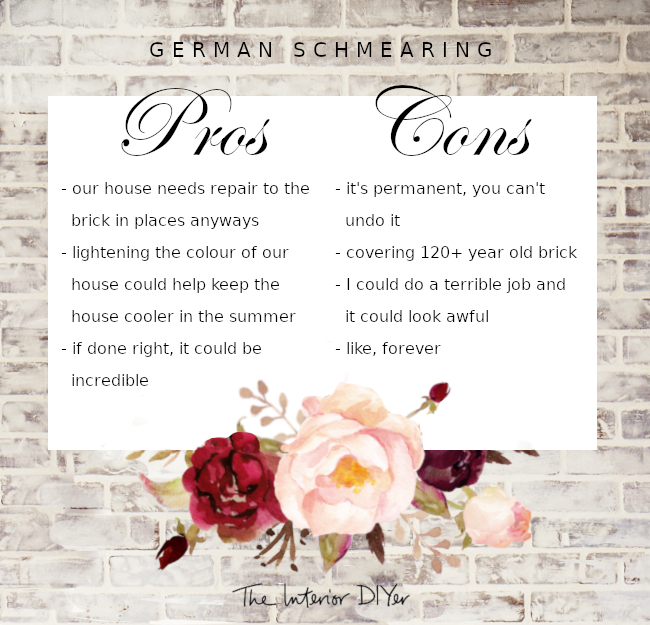
But I am hesitant. I would be completely covering the original brickwork. On the other hand, our home is one of very few homes in our neighbourhood that is original brick. All the homes in our neighbourhood are from the same era, but 97% of the houses have been covered in siding over the years. So in my mind, I’m helping to preserve the brick, kind of. By covering it. Kind of.
I’m definitely having a “yeah, but” back-and-forth in my head. I still don’t know what to think, so I’m putting it here for some feedback. And validation. Please validate my ideas. Because I think I could really nail it.
What do you think? Honestly.
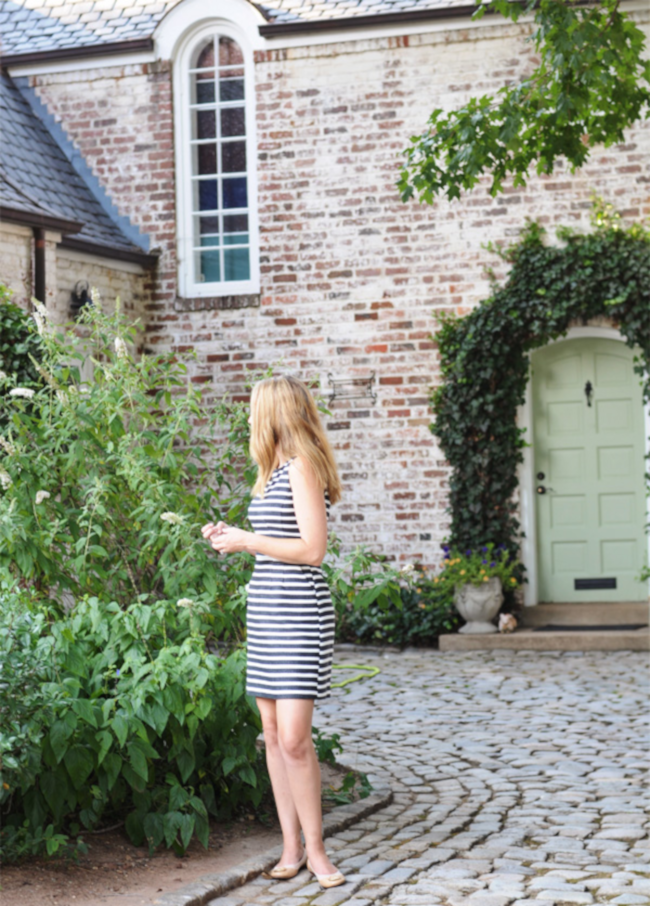

And here I thought German Schmearing was rendered goose fat on pumpernickel bread! I think it looks great in the examples shown, but really, I’d need to see what your house looks like to be able to judge. Maybe you can test it on a small section in the back of the house? Someplace that can be disguised in some way if it doesn’t work out?
Author
That’s exactly what I’m hoping to do. Our kitchen porch is at the back of the house and I’m hoping to do a test patch (or patches to try different techniques) when the weather is a bit warmer. It didn’t occur to me to share a picture of our brick as it is now. Shame on me – I’m a bad blogger! I might do that over the weekend and take a few pictures of the brick and share them in a follow-up post.
I think this has been in your head for a while now – and you won’t be satisfied until you’ve tried it! It sounds like a good option as work needs to be done on your bricks anyway. I like the idea of testing a bit, as per the other comments – you must show us when you do!
Author
I’m so hesitant because I still really haven’t gotten my head around what to do. I’ve actually found a few more subtle German schmearing techniques on Pinterest recently and I actually prefer them (like this one or this one). They’re so subtle and there seems to be more care in them. Especially that second example where there’s a sneak of a pattern on the left. I really like that. It seems to have more care and less slap-dashidness to it. And of course, I cannot wait to try it out come spring!
You must do this if only to tell people that you German Schmeared it. The word schmear isn’t in our vocabularies enough. But actually, I love the look of this. I really like the idea that you can retain the original brick, but improve the appearance without just painting right over it which seems like such a travesty with original brick. I think if anyone can do this successfully, it’s you.